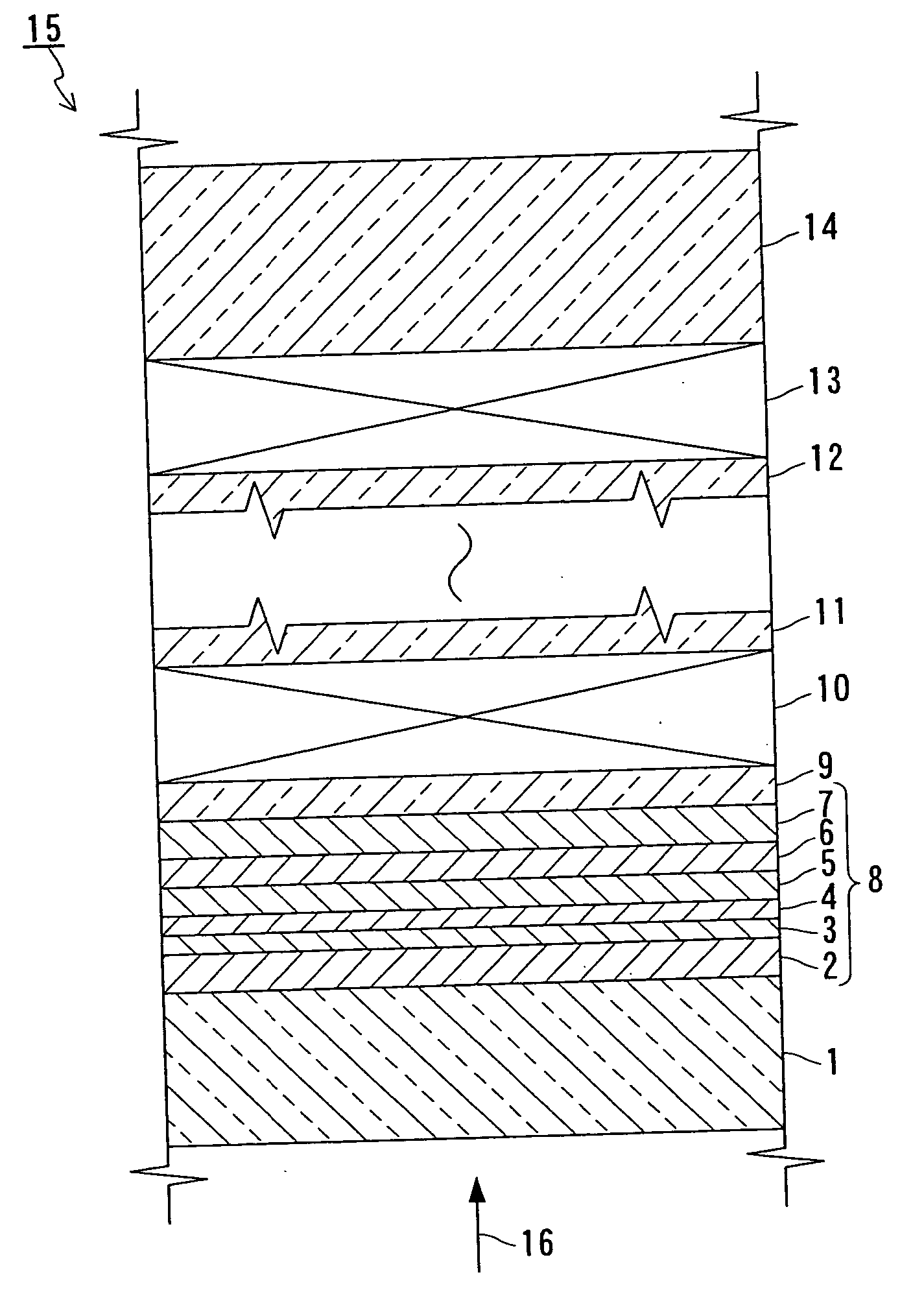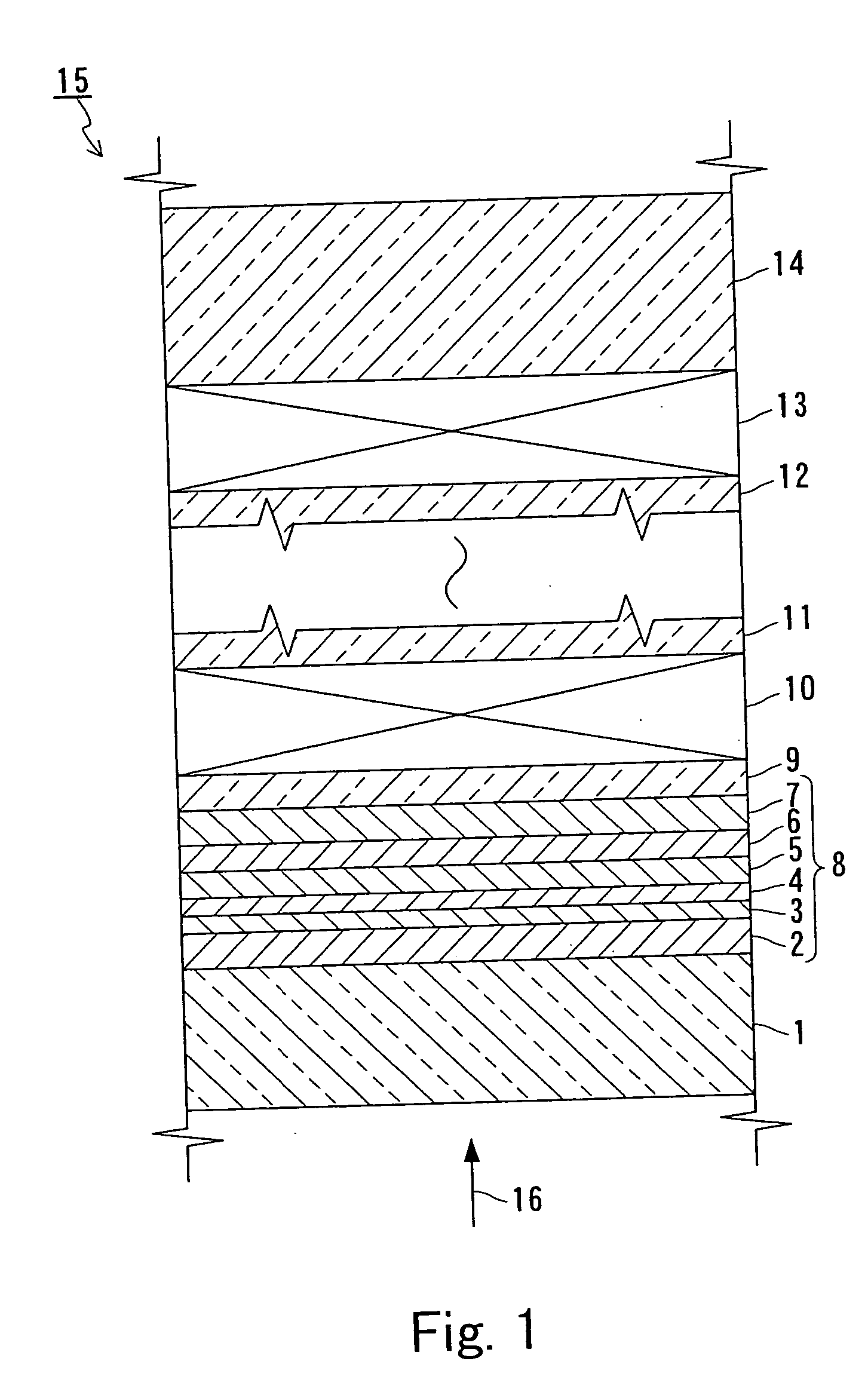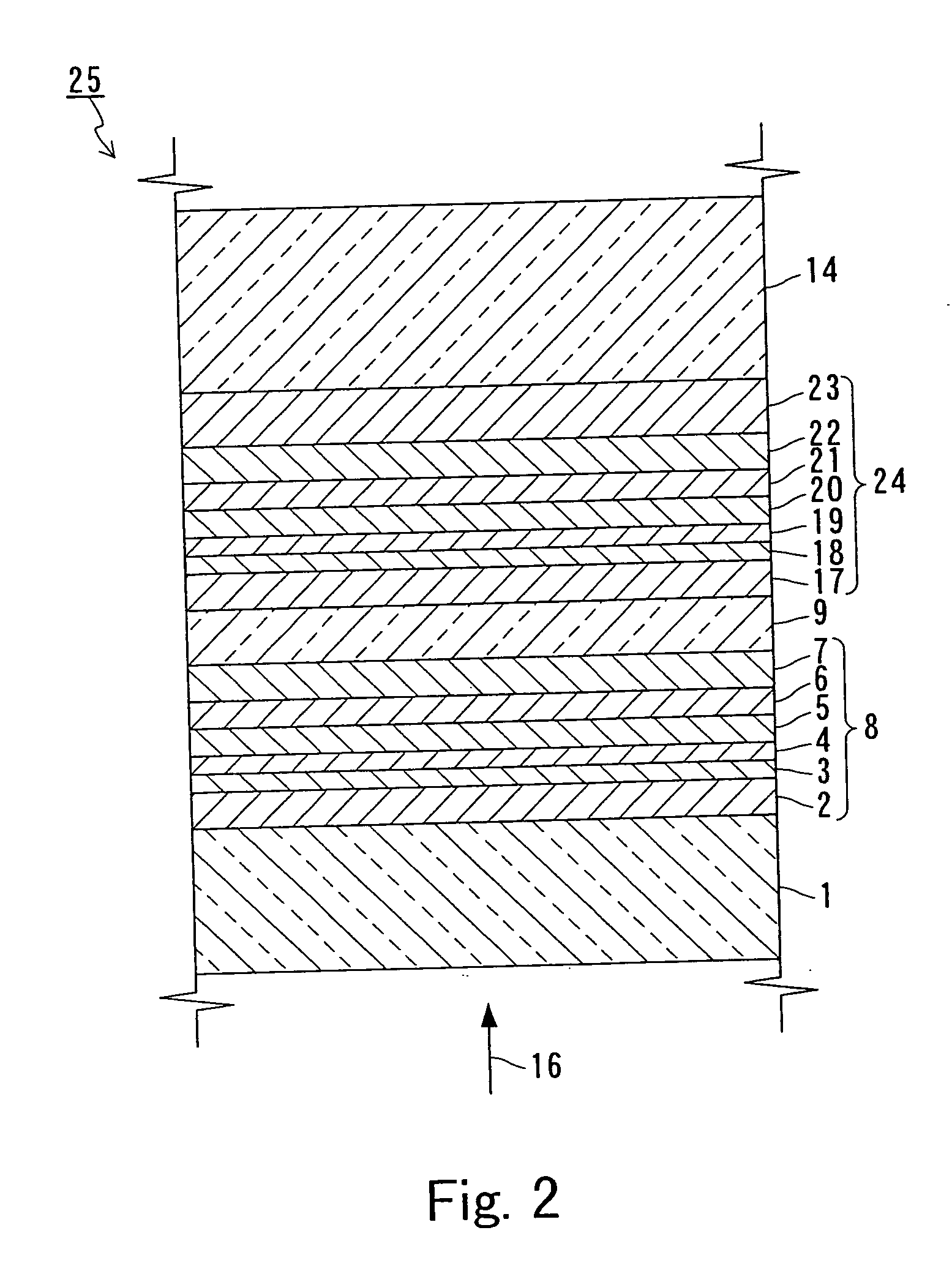Optical information recording medium
a technology of optical information and recording medium, which is applied in the field of optical information recording medium, can solve the problems of reducing the recording sensitivity of the second information layer 24, and the inability to obtain the saturated signal amplitude in the second information layer, and achieves the effect of increasing the recording sensitivity of the second information layer 24
- Summary
- Abstract
- Description
- Claims
- Application Information
AI Technical Summary
Benefits of technology
Problems solved by technology
Method used
Image
Examples
example 1
[0127] In Example 1, the first information layer 8 of the recording medium 15 shown in FIG. 1 was produced. The relationship between the refractive index nil, extinction coefficient k1 and thickness d1 of the transmittance adjusting layer 7, and the transmittance and reflectance of the first information layer 8 was checked. More specifically, samples were produced, each having the transparent layer 1 and the first information layer 8 including the transmittance adjusting layer 7 with varying material and thickness.
[0128] The samples were produced as follows. First, a polycarbonate substrate (diameter: 120 mm; thickness: 1100 .mu.m) was prepared as the substrate 14. Then, the transmittance adjusting layer 7 (thickness: 2 nm to 140 nm), an Ag--Pd--Cu layer (thickness: 10 nm) as the reflection layer 6, a Ge--Si--N layer (thickness: 10 nm) as the upper side protection layer 5, a Ge.sub.8Sb.sub.2Te.sub.11 layer (thickness: 6 nm) as the recording layer 4, a Ge--Si--N layer (thickness: 5 n...
example 2
[0134] In Example 2, the relationship between the characteristics of the first information layer 8, and the material and thickness of the recording layer 4 was checked. More specifically, samples were produced in which the substrate 14, the first information layer 8 including the recording layer 4 with varying thickness, and the transparent layer 1 were stacked. Regarding the samples thus produced, the first information layer 8 was measured for an erasure ratio, a carrier to noise ratio (CNR), a reflectance and a transmittance.
[0135] The samples were produced as follows. First, a polycarbonate substrate (diameter: 120 mm; thickness: 1100 .mu.m) with guide grooves for guiding the laser beam 16 was prepared as the substrate 14. Then, a TiO.sub.2 layer (thickness: 15 nm) as the transmittance adjusting layer 7, an Ag--Pd--Cu layer (thickness: 5 nm to 10 nm) as the reflection layer 6, a Ge--Si--N layer (thickness: 10 nm) as the upper side protection layer 5, a Ge.sub.8Sb.sub.2Te.sub.11 l...
example 3
[0140] In Example 3, the relationship between the characteristics of the first information layer 8 and the thickness d2 of the reflection layer 6 was checked. More specifically, samples were produced in which the substrate 14, the first information layer 8 including the reflection layer 6 with varying thickness, and the transparent layer 1 were stacked. Regarding the samples thus produced, the first information layer 8 was measured for a CNR, an erasure ratio, a reflectance and a transmittance.
[0141] The samples were produced as follows. First, a polycarbonate substrate (diameter: 120 mm; thickness: 1100 .mu.m) with guide grooves for guiding the laser beam 16 was prepared as the substrate 14. Then, a TiO.sub.2 layer (thickness: 15 nm) as the transmittance adjusting layer 7, an Ag--Pd--Cu layer (thickness: 2 nm to 20 nm) as the reflection layer 6, a Ge--Si--N layer (thickness: 10 nm) as the upper side protection layer 5, a Ge.sub.8Sb.sub.2Te.sub.11 layer (thickness: 6 nm) as the reco...
PUM
 Login to View More
Login to View More Abstract
Description
Claims
Application Information
 Login to View More
Login to View More - R&D
- Intellectual Property
- Life Sciences
- Materials
- Tech Scout
- Unparalleled Data Quality
- Higher Quality Content
- 60% Fewer Hallucinations
Browse by: Latest US Patents, China's latest patents, Technical Efficacy Thesaurus, Application Domain, Technology Topic, Popular Technical Reports.
© 2025 PatSnap. All rights reserved.Legal|Privacy policy|Modern Slavery Act Transparency Statement|Sitemap|About US| Contact US: help@patsnap.com



